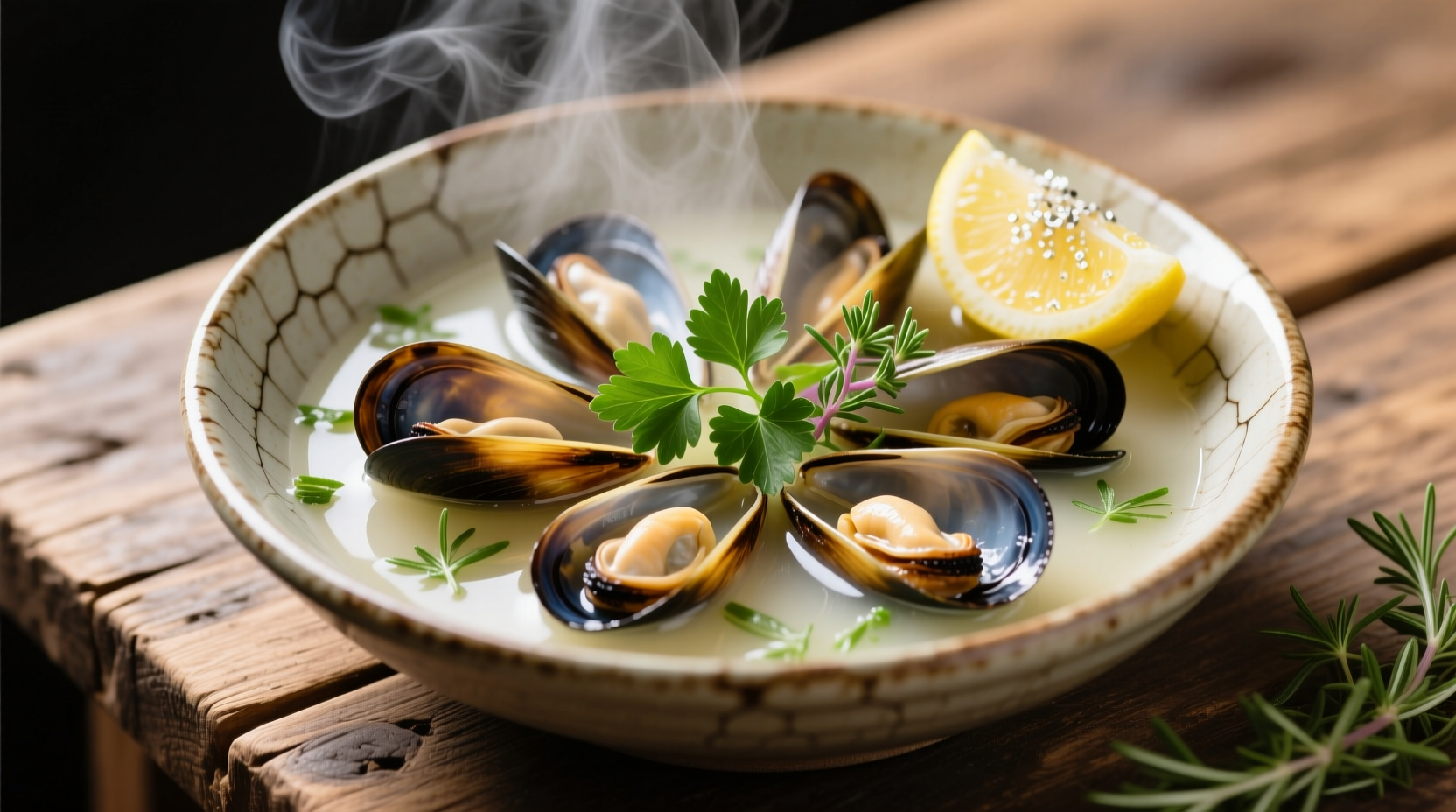Learn the foolproof method to cook fresh mussels in under 15 minutes with this step-by-step guide. Discover essential safety tips, proper cleaning techniques, and three restaurant-quality preparation methods that guarantee plump, flavorful mussels every time—no clammers' experience required.
Perfectly cooked mussels should be tender, juicy, and bursting with ocean-fresh flavor. Many home cooks avoid preparing mussels due to concerns about proper cleaning or overcooking, but with the right technique, they're one of the quickest and most impressive seafood dishes you can make. The FDA reports that properly handled and cooked mussels pose minimal food safety risks, making them an excellent choice for weeknight dinners or special occasions.
Why Mussels Make the Perfect Seafood Choice
Mussels offer remarkable advantages over other shellfish. According to the FDA Seafood Guidelines, they're among the most sustainable seafood options with lower mercury levels than many fish. A single pound of mussels delivers 20 grams of complete protein, plus essential nutrients like vitamin B12, iron, and selenium. Unlike clams or oysters, mussels cook in minutes and require minimal equipment—just a large pot and basic pantry staples.
Your Mussel Safety Checklist
Safety comes first when handling shellfish. Before cooking, verify your mussels meet these critical standards:
| Safety Check | Pass Condition | Fail Condition |
|---|---|---|
| Shell Condition | Tightly closed or close when tapped | Permanently open shells |
| Smell Test | Fresh ocean scent | Strong ammonia odor |
| Texture | Firm, moist appearance | Dry or slimy texture |
Discard any mussels failing these tests immediately. The World Health Organization emphasizes that proper shellfish handling prevents foodborne illness. Never cook mussels that arrived dead—their shells won't open during cooking, creating serious health hazards.
Step-by-Step Mussel Preparation
Follow this professional chef-tested sequence for perfect results every time:
1. The Critical Cleaning Process
Submerge mussels in cold water for 20 minutes—this encourages them to expel sand. Use a scrub brush to clean shells thoroughly, removing any barnacles or debris. Pull off the fibrous 'beard' by pressing your thumb against the shell and giving a firm yank toward the hinge. The FDA recommends changing the water once during this process to ensure optimal cleanliness.
2. The 3-Minute Freshness Test
After cleaning, place mussels in a bowl of fresh cold water. Discard any that float to the surface—these contain air pockets indicating they're dead. This simple test, recommended by the Seafood Health Facts organization, eliminates potential safety risks before cooking begins.
3. Cooking Method Selection
Choose your preparation technique based on desired flavor profile:
| Method | Best For | Cooking Time | Liquid Ratio |
|---|---|---|---|
| Classic Steam | Traditional preparation | 4-6 minutes | 1 cup liquid per 2 lbs mussels |
| White Wine Broth | Elegant presentation | 5-7 minutes | 1 bottle wine per 4 lbs |
| Coconut Curry | Flavorful variations | 6-8 minutes | 1 can coconut milk per 3 lbs |

Perfect Cooking Technique
Follow these precise steps for restaurant-quality results:
- Heat your chosen liquid (wine, broth, or coconut milk) to a vigorous simmer in a large pot with a tight-fitting lid
- Add aromatics like garlic, shallots, and herbs (avoid overcrowding the pot)
- Carefully add cleaned mussels in a single layer
- Cover immediately and cook undisturbed for exactly 4-6 minutes
- Remove from heat as soon as shells open (discard any that remain closed)
The America's Test Kitchen research team confirms that overcooking is the #1 mistake home cooks make with mussels. They become rubbery and shrunken when cooked beyond 7 minutes. The ideal texture occurs when shells first pop open—this indicates perfect doneness.
Avoid These Common Mistakes
Even experienced cooks make these critical errors:
- Using insufficient liquid - Mussels need adequate steam to open properly. The National Fisheries Institute recommends at least 1 cup of liquid per 2 pounds of mussels.
- Adding salt to cooking liquid - Mussels contain natural salt; additional salt concentrates as liquid reduces, making the dish overly salty.
- Stirring during cooking - This damages delicate shells and prevents even steaming. Let them cook undisturbed.
- Serving with inappropriate sides - Crusty bread is essential for soaking up the delicious broth—don't skip this critical component!
Serving and Storage Guidelines
Serve mussels immediately in wide, shallow bowls with plenty of broth. Include crusty bread for dipping—this traditional accompaniment transforms the cooking liquid into a complete meal. The US Food Safety and Inspection Service recommends consuming cooked mussels within two hours of preparation.
For leftovers, remove mussels from shells and store in an airtight container with some broth. They'll keep for 2-3 days in the refrigerator but shouldn't be frozen as texture deteriorates significantly. Always reheat gently in their liquid to prevent toughness.
When Not to Cook Mussels
Understanding context boundaries prevents food safety issues. Never cook mussels if:
- They've been stored beyond 3 days in the refrigerator
- Water temperatures exceeded 40°F during transport
- They show any signs of spoilage (ammonia smell, dry texture)
- You're cooking for immunocompromised individuals without proper food handling certification
The Seafood Watch program from the Monterey Bay Aquarium emphasizes that proper handling from purchase to plate ensures both safety and sustainability. When in doubt about freshness, always choose another protein source.











 浙公网安备
33010002000092号
浙公网安备
33010002000092号 浙B2-20120091-4
浙B2-20120091-4